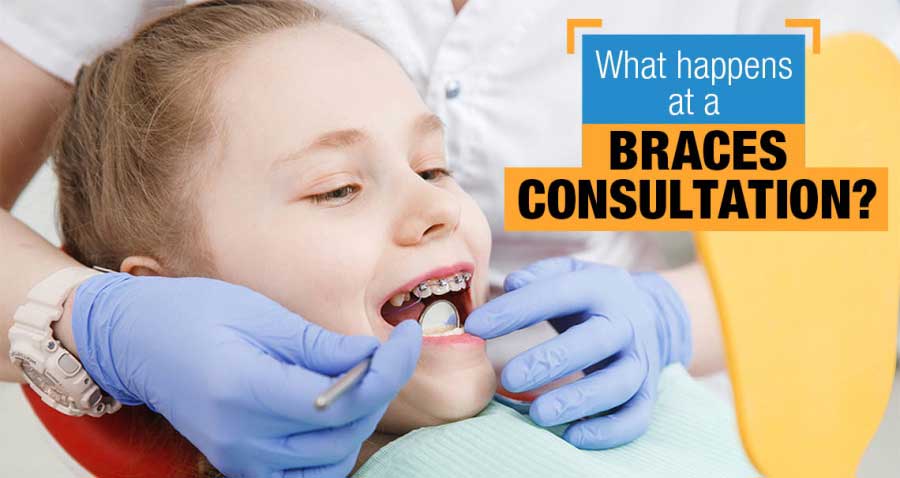Comprehensive Overview to Orthodontics Procedures for Fixing Dental Misalignments
In the realm of orthodontics, the trip to accomplishing a completely aligned smile includes a myriad of treatments tailored to fix dental misalignments. From standard braces to unseen aligners and even surgical options, the field of orthodontics offers a series of remedies to attend to varying degrees of dental irregularities. Understanding the ins and outs of each procedure, including their mechanisms, advantages, and possible drawbacks, is essential in making notified choices regarding one's orthodontic treatment. As we navigate via the detailed guide to orthodontic procedures for remedying oral imbalances, the detailed information of each approach will certainly unfold, shedding light on the course toward a useful and harmonious oral placement.
Orthodontic Procedures Introduction

In enhancement to standard dental braces and clear aligners, orthodontists may additionally suggest various other treatments like headgear, palatal expanders, or retainers to deal with certain placement problems (cumming orthodontist). These treatments are tailored to every client's unique needs and may include a mix of therapies to accomplish the desired results. Normal changes and tracking are crucial components of orthodontic treatment to ensure development is on track and to make any type of necessary modifications along the means. By going through orthodontic procedures, clients can not just accomplish a straighter grin however likewise boost their total oral health and wellness and feature.
Conventional Dental Braces: Exactly How They Function
When thinking about orthodontic therapies for oral imbalances, standard dental braces stand apart as a time-tested technique for remedying teeth positioning. Typical braces contain brackets, wires, and bands that collaborate to apply constant pressure on the teeth, progressively relocating them into the desired alignment. The brackets are connected to the teeth using a special adhesive, and the cords are threaded with the braces. By readjusting the stress of the cables, orthodontists can regulate the instructions and pressure related to each tooth, guiding them into appropriate positioning over time.
One key aspect of exactly how traditional dental braces work is the procedure of bone improvement. As pressure is put on the teeth with the braces, the bone bordering the teeth is reshaped to support the new tooth settings. This improvement is necessary for the long-lasting stability of the fixed placement. Patients will certainly require normal modifications at the orthodontist's workplace to ensure the braces proceed to use the proper stress for reliable teeth motion.
Unnoticeable Aligners: Cons and pros
Invisible aligners supply a hassle-free and discreet option to traditional dental braces for dealing with dental imbalances. These clear, tailor-made trays are basically unseen when used, making them an enticing choice for individuals looking for a more cosmetically pleasing orthodontic therapy. Among the primary benefits of invisible aligners is their removability, enabling for simpler upkeep of oral hygiene contrasted to traditional braces. People can get rid of the aligners prior to consuming or cleaning their teeth, decreasing the risk of food getting stuck in the appliance and streamlining the cleansing procedure.

Surgical Orthodontic Options
Surgical treatments in orthodontics present viable alternatives for addressing complicated dental misalignments that may not be properly dealt with through traditional orthodontic therapies. While invisible aligners and standard braces can remedy several orthodontic concerns, specific instances need surgical treatment to accomplish optimum outcomes. Surgical orthodontic options are generally suggested for extreme malocclusions, significant jaw disparities, and cases where the underlying bone structure needs alteration to achieve correct alignment.
One common medical orthodontic treatment is orthognathic surgery, which entails repositioning the jaws to deal with useful issues such as trouble speaking or chewing. This surgery is often carried out in partnership with an orthodontist that aids line up the teeth before and after the procedure. Surgical orthodontics may also entail procedures to expose affected teeth, eliminate excess gum cells, or improve the jawbone to produce an extra harmonious face profile.
Prior to thinking about medical orthodontic choices, people undertake a thorough analysis to determine the requirement and possible advantages of such treatments. aligners. While surgical procedure might seem overwhelming, it can considerably improve both the function and aesthetics of the smile in instances where standard orthodontic therapies fail
Retainers and Post-Treatment Care

Post-treatment treatment includes following the orthodontist's instructions carefully. This may include appropriate dental health practices, participating in follow-up visits, and using the retainers as recommended. Failure to adhere to post-treatment care directions can result in relapse, where the teeth gradually relocate back in the direction of their initial settings. Constant retainer wear, excellent oral health, and regular dental exams are essential for preserving the outcomes attained via orthodontic surgery and ensuring the long-term security of the remedied dental positioning.
Final Thought
In final thought, orthodontic procedures provide numerous alternatives for correcting dental misalignments. Surgical orthodontic alternatives are readily available for a lot more serious imbalances. Overall, orthodontic procedures can effectively improve oral wellness and aesthetic look.
As we navigate with the detailed overview to orthodontic treatments for correcting dental imbalances, the intricate details of each approach will certainly unravel, losing light on the course towards a unified and functional oral positioning. - orthodontist
One of the most usual orthodontic therapies is the usage of dental braces, which consist of steel braces and wires that apply gentle stress to slowly change teeth right into the wanted position.When considering orthodontic treatments for oral imbalances, typical braces stand out as a reliable technique for dealing with teeth positioning. In addition, unseen aligners might not be appropriate for complex orthodontic concerns visit that call for even more significant teeth motion, as they are generally suggested for moderate to moderate instances. Retainers are customized orthodontic devices designed to hold teeth in their fixed settings after the conclusion of orthodontic therapy.